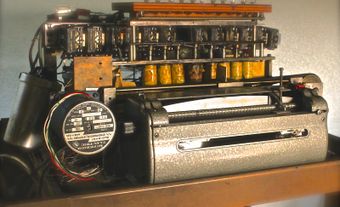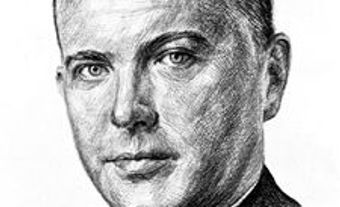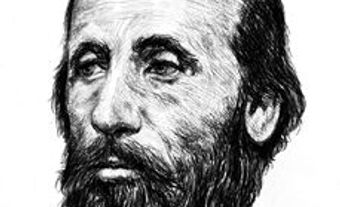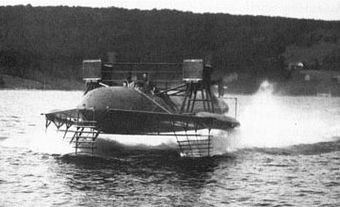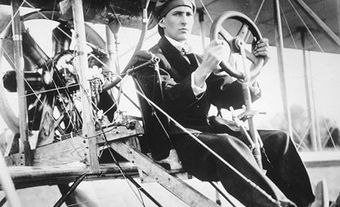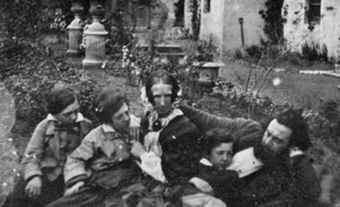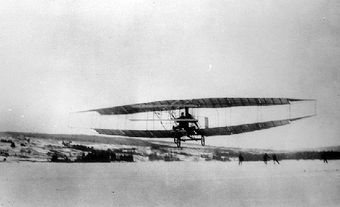Alexander Graham Bell, teacher of the deaf, inventor, scientist (born 3 March 1847 in Edinburgh, Scotland; died 2 August 1922 near Baddeck, NS). Alexander Graham Bell is generally considered second only to Thomas Alva Edison among 19th- and 20th-century inventors. Although he is best known as the inventor of the first practical telephone, he also did innovative work in other fields, including aeronautics, hydrofoils and wireless communication (the “photophone”). Moreover, Bell himself considered his work with the deaf to be his most important contribution. Born in Scotland, he emigrated to Canada in 1870 with his parents. Bell married American Mabel Hubbard in 1877 and became a naturalized American citizen in 1882. From the mid-1880s, he and his family spent their summers near Baddeck on Cape Breton Island, where they built a large home, Beinn Bhreagh. From then on, Bell divided his time and his research between the United States and Canada. He died and was buried at Baddeck in 1922.
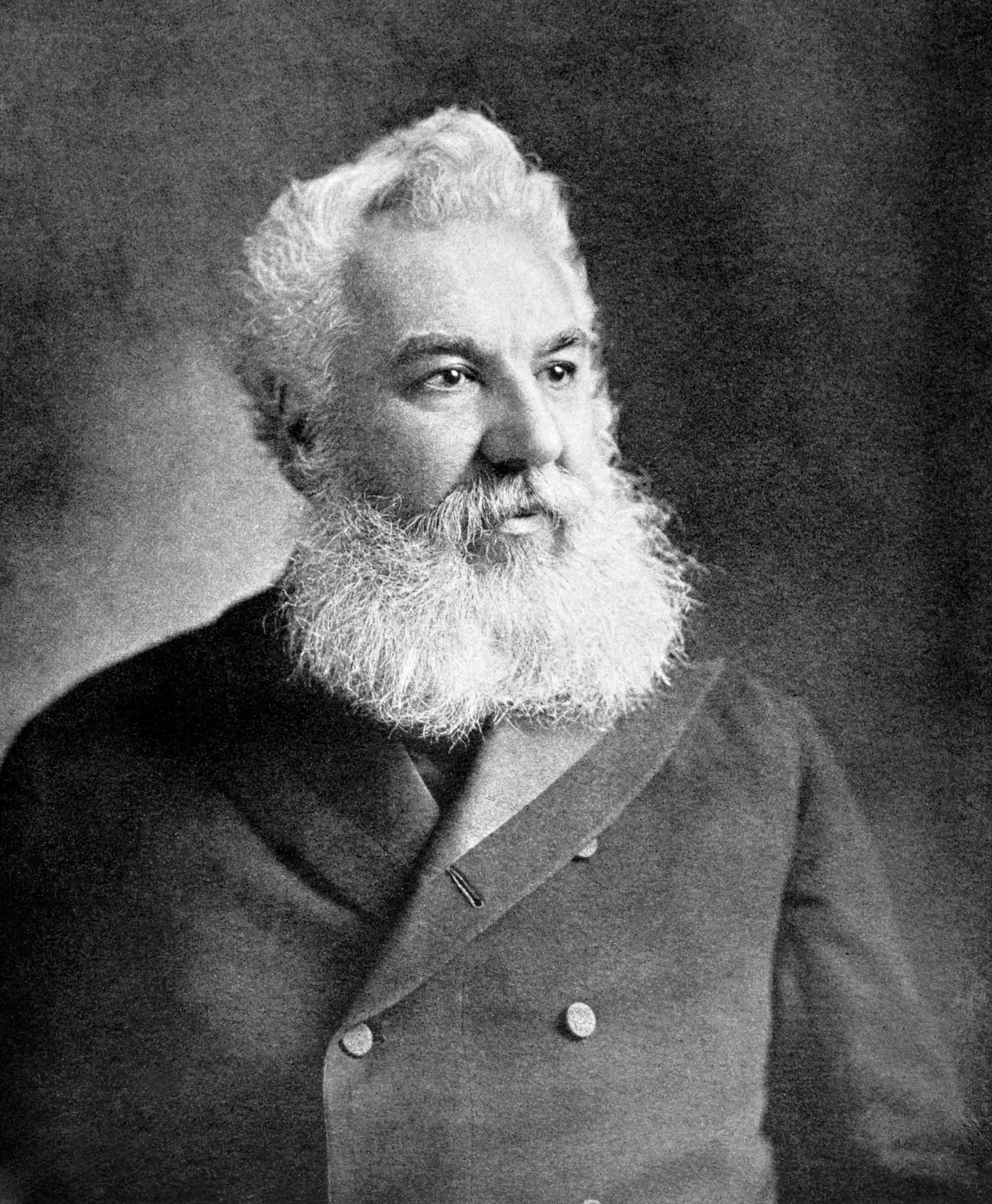
Bell’s Childhood and Family Background
Alexander Graham Bell was born in 1847 in Edinburgh, Scotland, to mother Eliza Grace Symonds and father Alexander Melville Bell. He was the middle of three children, between elder brother Melville James (born 1845) and younger brother Edward Charles (born 1848). Unlike his brothers, Alexander was not given a middle name at birth, but added “Graham” in 1858.
Both his father and grandfather were experts in speech and elocution (the skill of clear, expressive speech, focusing on pronunciation and articulation). His grandfather — also named Alexander — had done pioneering work in speech impediments and in 1835 published The Practical Elocutionist, which used symbols to indicate word groupings. This would be the basis of a system of “visible speech” developed by Alexander Melville Bell, which he (and later his son) would use in teaching the deaf.
The Bell children received their early schooling at home from both their father and their mother, an accomplished painter who was partially deaf. As a teenager, Alexander Bell attended the Royal High School in Edinburgh. Although Bell loved both music and science, he was an indifferent student and prone to daydreaming. Outside school, however, he demonstrated a keen mind. In 1858, at age 12, he invented a process to remove the husks at a flour mill owned by his friend’s father, adding wire brushes to an existing machine.
At age 15, Bell was sent to London, where he lived for a year with his grandfather. Around this time, Bell met telegraph researcher Charles Wheatstone, who had produced a version of Wolfgang von Kempelen’s Speaking Machine, an instrument that mechanically produced human speech. This inspired Bell and his brother Melville to develop their own “talking larynx” —an artificial windpipe that produced a small number of recognizable words when air was blown through it.
Bell began teaching elocution at age 16, while also researching the physiology of speech. His work so impressed phonetician Alexander John Ellis, that he invited the young man to join the Philological Society in 1866. The following year, he began teaching his father’s “visible speech” method to deaf students in London, where the family was then located. Sadly, Bell’s younger brother Edward died the same year of tuberculosis. Bell took anatomy and physiology at University College in London from 1868 to 1870, but didn’t finish his degree.
In May 1870, his older brother Melville died of tuberculosis, and his parents decided to leave Britain, fearing that their remaining son would succumb to the illness as well. In August 1870, he and his parents (and his widowed sister-in-law) moved to Canada and settled in Brantford, Ontario. Not long before they left, the family dined with Alexander Ellis, who pointed Bell towards the work of German scientist Hermann von Helmholtz — work that inspired Bell’s interest in electromagnetism and electricity and his belief that people would soon be able to “talk by telegraph.”

Teacher of the Deaf
In 1871, Alexander Graham Bell accepted a position teaching at a school for the deaf in Boston, Massachusetts, beginning a long career as an educator of the deaf in the United States. He spent summers with the family at Brantford, Ontario, retreating there to rest when his tendency to overwork left him exhausted.
Around this time, many American experts believed that deaf people (then referred to as “deaf mutes”) could not be taught to speak. The oldest school for the deaf, the American Asylum for the Education and Instruction of the Deaf and Dumb (later the American School for the Deaf) in Hartford, Connecticut, exclusively taught sign language. There were others, however, who believed that the deaf could and should be taught oral skills. This included Gardiner Greene Hubbard, who founded the Clarke Institution for Deaf-Mutes (later the Clarke School for the Deaf) in Northampton, Massachusetts, in 1867.
Bell (like his father) taught "visible speech" to the deaf by illustrating, through a series of drawings, how sounds are made, essentially teaching his students to speak by seeing sound. He helped them become aware of the sounds around them by feeling sound vibrations. One teaching aid was a balloon— by clutching one tightly against their chests students could feel sound.
In the spring of 1872, Bell taught at the American Asylum for the Education and Instruction of the Deaf and Dumb in Hartford and the Clarke Institution for Deaf-Mutes in Northampton. That fall, he opened his own School of Vocal Physiology in Boston, and in 1873, he became a professor of vocal physiology and elocution at Boston University. The same year, he began tutoring Mabel Hubbard, a deaf student who was the daughter of Clarke School founder Gardiner Greene Hubbard. Bell was quickly captivated by the young Mabel, who was 10 years his junior (they married in 1877).
When Bell was not teaching, he spent much of his free time researching the electrical transmission of sound, eventually leading to the development of the telephone (see below). Yet while he is best known for his inventions, he remained committed to education of the deaf throughout his life. In 1887, for example, he established the Volta Bureau for research, information and advocacy for the deaf in Washington, DC. He was also president of the American Association for the Promotion of the Teaching of Speech to the Deaf (now the Alexander Graham Bell Association for the Deaf and Hard of Hearing), which was founded in 1890.
Bell also had a close relationship with Helen Keller, whom he met in 1887; the two communicated frequently and Keller visited Bell’s home several times. Keller’s The Story of My Life (1903) was dedicated to Bell, “who has taught the deaf to speak and enabled the listening ear to hear speech from the Atlantic to the Rockies.”
The Multiple Telegraph
Much of Alexander Graham Bell's work can be described as a series of observations leading one to another. His combined interest in sound and communication developed his interest in improving the telegraph, which ultimately led to his success with the telephone.
When Bell began to experiment with electrical signals, the telegraph had existed for more than 30 years. Although it was a successful system, the telegraph was limited to receiving and sending one message at a time, using Morse code. By the early 1870s, a number of inventors (including Thomas Edison and Elisha Gray) were working on a telegraph that that could transmit simultaneous messages.
Even before coming to Canada, Bell had been intrigued by the idea of using a well-known musical phenomenon to transmit multiple telegraph messages simultaneously. He knew that everything has a natural frequency (how quickly something vibrates) and that a sound's pitch relies on its frequency. By singing into a piano he discovered that varying the pitch of his voice made different piano strings vibrate in return. His observations led to the idea of sending many different messages along a single wire, with identical tuning forks tuned to different frequencies at either end to send and receive, a system he called the "harmonic telegraph."
By October 1874, Bell's research had been so successful that he informed his future father-in-law, Gardiner Greene Hubbard, about the possibility of a multiple telegraph. Hubbard resented the Western Union Telegraph Company's communications monopoly and gave Bell the financial backing he needed. Hubbard was joined by leather merchant Thomas Sanders, who was also the father of one of Bell's deaf students in Boston. Bell worked on the multiple telegraph with a young electrician, Thomas Watson. At the same time, he and Watson were exploring the possibility of a device that would transmit speech electrically.
Development of the Telephone
According to Alexander Graham Bell, inspiration struck on 26 July 1874 during a summer visit to Brantford. While watching the currents in the Grand River, Bell reflected on sound waves moving through the air and realized that with electricity, "it would be possible to transmit sounds of any sort" by controlling the intensity of the current. Based on his new insight, he sketched a primitive telephone.
The first major breakthrough occurred on 2 June 1875. Bell and Watson were preparing an experiment with the multiple telegraph by tuning reeds on three sets of transmitters and receivers in different rooms. One of Watson's reeds, affixed too tightly, was stuck to its electromagnet. With the transmitters off, Watson plucked the reed to free it, and Bell heard a twang in his receiver. They had inadvertently reproduced sound and proved that tones could vary the strength of an electric current in a wire. The next step was to build a working transmitter with a membrane that could vary electronic currents and a receiver that could reproduce the variations in audible frequencies. Within days Watson had built a primitive telephone.
Bell continued research on the telephone, and on 14 February 1876 Hubbard submitted an application to the US Patent Office on his behalf for an undulatory current, variable resistance liquid transmitter. Hours later, Elisha Gray’s attorney submitted an application for a similar transmitter. On 7 March, Bell received Patent No. 174,465, “Improvements in Telegraphy.” Although he hadn’t yet succeeded in building a working telephone (neither had Gray), the patent established intellectual and commercial rights to the technology. He and Watson continued their work, and on 10 March 1876, Bell spoke into the first telephone, uttering the now-famous instruction to his assistant: "Mr. Watson — come here — I want to see you."
Bell's work culminated in not only the birth of the telephone, but the death of the multiple telegraph. The communications potential of being able to "talk with electricity" overcame anything that could be gained by simply increasing the capacity of a dot-and-dash system.
Bell, Hubbard, Sanders and Watson formed the Bell Telephone Company on 9 July 1877. The following day, Bell gave his father, Melville, most of his Canadian rights to the telephone. On 11 July, he married Mabel Gardiner Hubbard (1857–1923) and embarked on a yearlong honeymoon in Europe. Over the next several years, the Bell company fought and won hundreds of telephone patent lawsuits in the courts, making Bell rich by age 35. By that point, however, he had largely withdrawn from the business and turned to other interests.
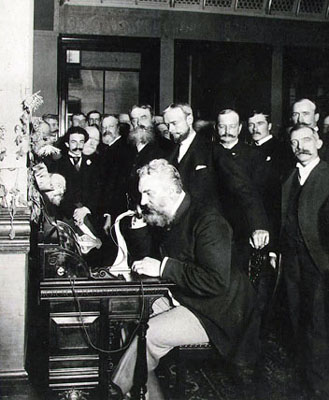
Volta Laboratory
Alexander Graham Bell might easily have been content with the financial success of his invention. His many laboratory notebooks reveal the depth of the intellectual curiosity that drove him to learn and create. In 1880, Bell received the Volta Prize from the French government, in recognition of his achievements in electrical science (particularly the invention of the telephone). Bell used the prize money to found the Volta Laboratory Association with his cousin, Chichester A. Bell, and Charles Sumner Tainter. Based in Washington, DC (where the Bell family now lived), the laboratory was dedicated to acoustic and electrical research.
Photophone
In 1880, Alexander Graham Bell and Tainter developed a device they called the "photophone," which transmitted sound on a beam of light. In February, they successfully sent a photophone message nearly 200 metres between two buildings. Bell considered the photophone "the greatest invention [he had] ever made, greater than the telephone." Although the photophone was not commercially viable, it did demonstrate that one could use light to transmit sound. Their invention is therefore considered to be the forerunner of fibre optics and wireless communications.
Metal Detector
In July 1881, Alexander Graham Bell and Tainter developed an electrical bullet probe, in an effort to save the life of US President James A Garfield, who had been shot. The probe was unable to find the bullet and Garfield eventually died of infection. However, Bell continued to tinker with his device, and demonstrated it a few weeks later in New York. The device was commercially produced by a Dr. John H. Girdner and used by military surgeons during several wars over the next few years.
Graphophone
Alexander Graham Bell, his cousin Chichester A. Bell, and Tainter also developed the graphophone, improving on the phonograph patented by Thomas Edison in 1878. (See also Recorded Sound Technology and its Impact.) Edison’s phonograph had a cylinder covered in tinfoil, upon which a rigid stylus cut a groove. Bell and his colleagues used waxed-coated cylinders, which produced a better recording, and a floating instead of a rigid stylus; they also added an electric motor instead of a manual crank. The group received patents in 1886, and founded the Volta Graphophone Company with James Saville and Charles J. Bell. The following year, the American Graphophone Company was established to manufacture the graphophones, one of which became popular as a dictating machine. In 1888, Jesse Lippincott licensed the patents, with Bell using his share of the proceeds to found the Volta Bureau.
Aerodromes and Hydrodromes
From the mid-1890s, Alexander Graham Bell’s primary research interest was aviation and flight. In 1907, Bell and his wife co-founded the Aerial Experiment Association (AEA) in partnership with J.A.D. McCurdy, F.W. Baldwin and a few other young engineers, such as Glenn H. Curtiss, an American builder of motorcycle engines, and Lieutenant Thomas Selfridge, who acted as observer from the American army. The team split their time between the United States and the Bell estate at Baddeck.
The association's first experimental flight was conducted on 6 December 1907. The test aircraft, the Cygnet I, was a large, tetrahedral kite placed on pontoons that attained a height of 51 metres and stayed in the air for seven minutes. In 1908, the association built and flew several aircraft, with varying success. They achieved a record on 4 July 1908 when Curtiss flew the June Bug to become the first aircraft to fly one kilometre in the western hemisphere, for which the association was awarded the Scientific American Trophy.
On 23 February 1909, McCurdy flew the Silver Dart at Baddeck — what is generally accepted as the first powered, heavier-than-air flight in Canada (the first such flight in history was achieved in 1903 by American inventors Orville and Wilbur Wright at Kitty Hawk, North Carolina).

Although the AEA disbanded in 1909, Baldwin and McCurdy continued to work as the Canadian Aerodrome Company (CAC) for another year, supported by Bell. The CAC hoped to convince the Canadian government to invest in their airplanes, demonstrating both the Silver Dart and the Baddeck No. I at Camp Petawawa. However, the government lost interest and the CAC dissolved in 1910. (See also Alexander Graham Bell, Aviation Pioneer.)

Bell and Baldwin continued work at Baddeck, focusing on “hydrodromes” or hydrofoils (the Bell team had begun work on hydrodromes in 1908). In 1919, one of their hydrofoils, the HD-4, set a world water-speed record of 114.04 km/h, at a time when the world's fastest steamships travelled at only 48 km/h. That record was not approached by any other boat for more than a decade.
Commitment to Scientific Research
Alexander Graham Bell worked on a number of different inventions, including the audiometer and a “vacuum jacket” (a precursor of the iron lung) following the death of his infant son in 1881. He also researched the desalination of seawater and attempted to breed a "super race" of sheep at Baddeck. Bell supported the experiments of others as well, funding the early atomic experiments of A.M. Michelson, among other projects. He also supported the journal Science, which would become America’s foremost journal of scientific research.
Bell helped found the National Geographic Society in 1888 and was its second president (1898–1903). The first president of the society was his father-in-law, Gardiner Greene Hubbard. Bell wanted the society’s magazine to appeal to the general public, not just to professional geographers and geologists, and promoted the use of photography in the magazine. In 1899, he hired Gilbert Hovey Grosvenor, who would become editor-in chief in 1903 and president of the society in 1920. Grosvenor (who married Bell’s daughter, Elsie May, in 1900) was a pioneer of photojournalism. Under his leadership, the National Geographic Magazine became widely popular, increasing its circulation from under a thousand readers to more than two million.
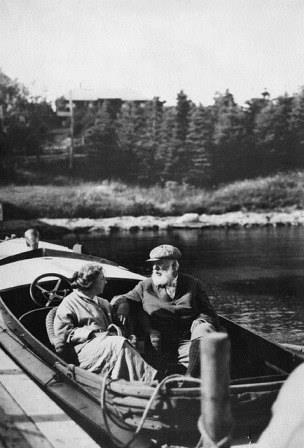
Family
Alexander Graham Bell married Mabel Gardiner Hubbard (1857–1923) in July 1877. Mabel Bell shared her husband’s scientific interests, and was co-founder (and funder) of the Aerial Experiment Association. She also undertook her own horticultural experiments. They enjoyed a close relationship with both sets of parents. Bell worked closely with his father-in-law, while his own parents moved to Washington, DC, to be close to their son and his family.
The Bells had two daughters — Elsie May Bell (1878–1964) and Marian Hubbard “Daisy” Bell (1880–1962) — and two sons, Edward (1881) and Robert (1883), who both died in infancy. Elsie married Gilbert Grosvenor, who would become editor-in-chief of the National Geographic Society Magazine, and had seven children. Daisy married botanist David Grandison Fairchild, whom she met through the National Geographic Society; the couple had three children.
Death and Significance
Alexander Graham Bell died in 1922 at Beinn Bhreagh, due to complications from diabetes. Best known as the inventor of the telephone, he spent much of his life teaching the deaf and considered it his most important contribution. Moreover, the telephone was only one of Bell’s many inventions and innovations. In fact, he refused to have one in his own study, as he found it intruded on his scientific work. Fittingly, all telephones in North America were silenced for a brief time at the conclusion of his funeral. His wife, Mabel, died in January 1923, just five months later. Both were interred in Nova Scotia, on a hill overlooking Baddeck Bay. The Beinn Bhreagh estate is still owned by descendants of the family and in 2015, it was declared a provincial heritage property.

For his contributions, Bell received several awards and recognitions. He was the recipient of numerous honorary degrees from universities in Canada and abroad. Bell was also recognized posthumously. He was designated a national historic person by the Government of Canada in 1977. He was also inducted into Canada’s Aviation Hall of Fame in 1974, the Canadian Science and Engineering Hall of Fame in 1992, Canada’s Walk of Fame in 2001.

 Share on Facebook
Share on Facebook Share on X
Share on X Share by Email
Share by Email Share on Google Classroom
Share on Google Classroom
